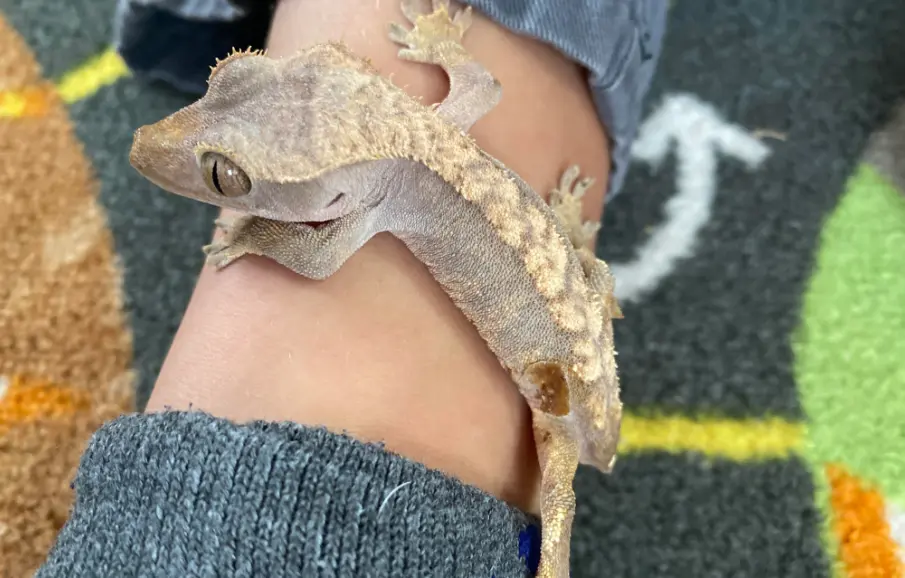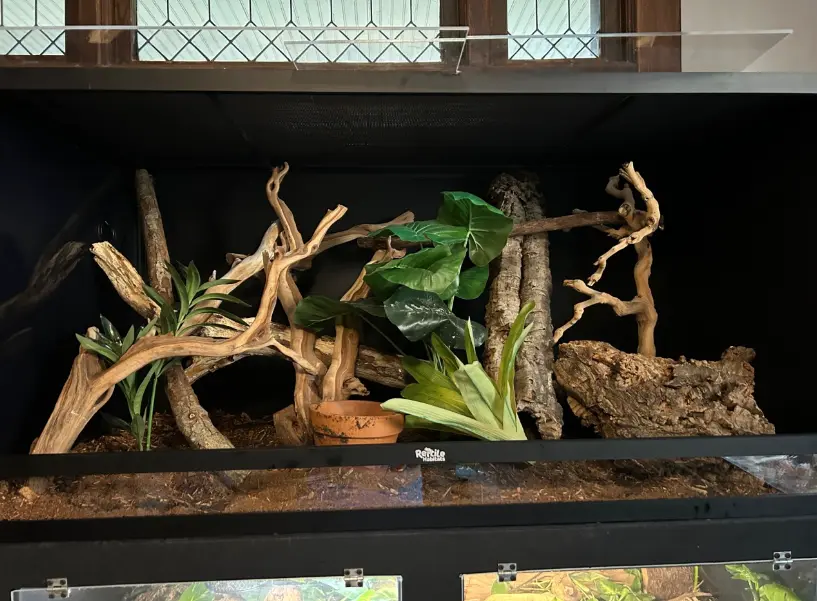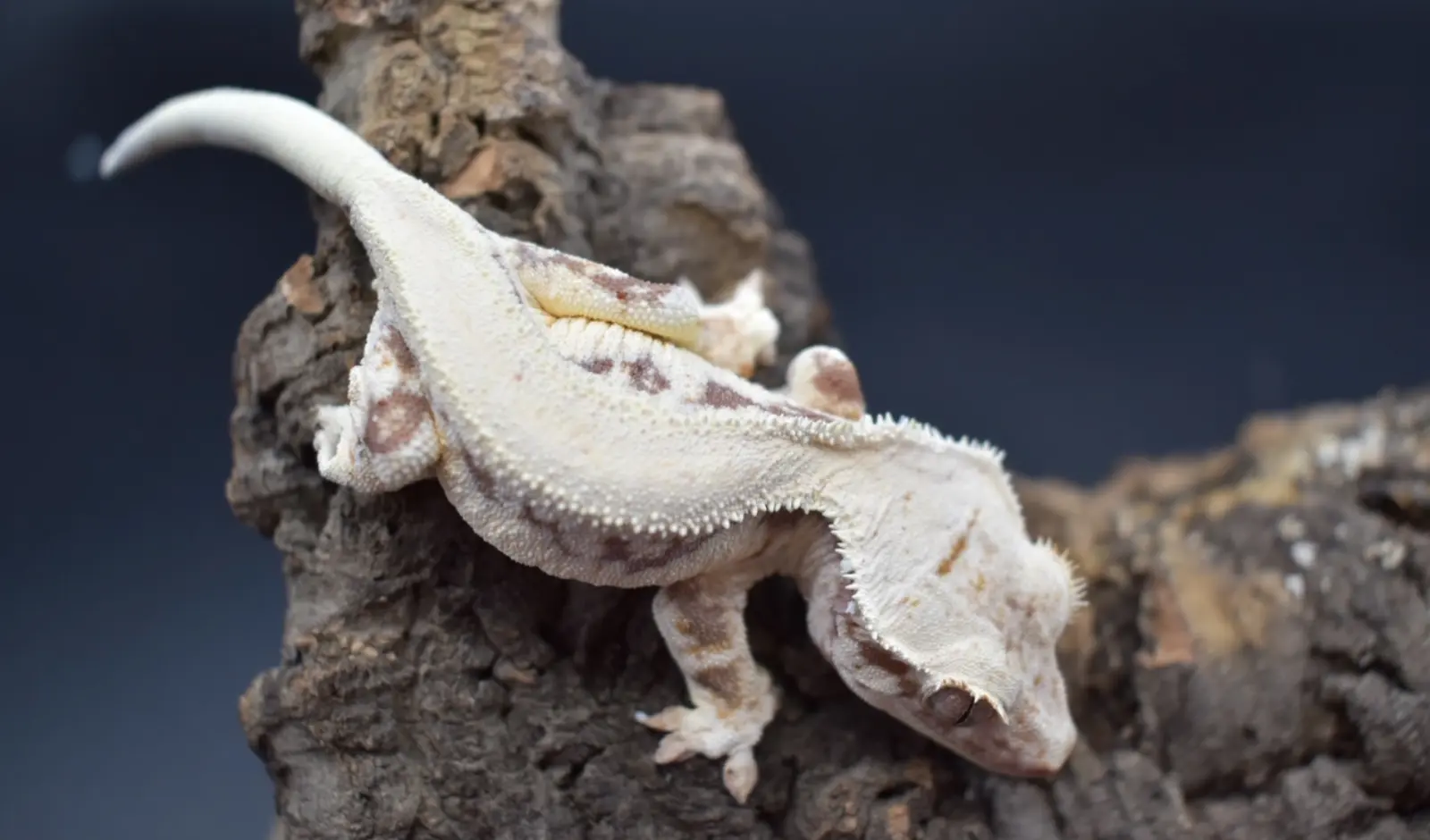One of the most fascinating features of crested geckos is their ability to change their color depending on their mood, temperature, lighting, and other factors.
This phenomenon is referred to as ‘firing up‘ or ‘firing down.‘
However, sometimes you may notice that your crested gecko has become very pale or even white.
So, does this mean your crested gecko is sick, and stressed or Is it dying?
Reasons Why Your Crested Gecko Pale
There are several reasons why your crested gecko may become pale including:
- Shedding.
- Age and Genetics
- Environmental Factors.
Here are the detailed explanations:
1) Shedding

The most obvious reason why your crested gecko may become pale is because it is about to shed its skin.
Crested geckos regularly shed their skin, typically every few weeks or months, depending on how old they are, how quickly they’re growing, and what they eat. A few days before shedding, their skin will start to appear duller, greyer, or even white.
Why does this happen?
It’s because the old layer of skin starts separating from the new one beneath, and this creates air pockets that make the skin look different under the light.
So, don’t worry if your crested gecko looks pale before shedding, as long as it sheds completely and without any problems.
To help your crested gecko have a smooth shedding process, make sure there’s enough moisture in its enclosure.
You can do this by spraying the enclosure daily or using a box with damp sphagnum moss or paper towels.
During shedding, avoid handling your crested gecko to prevent stress or skin damage.
Note: If you notice any stuck shed on its body, especially around its eyes, mouth, toes, or tail tip, gently remove it with warm water or a cotton swab.
2) Age and Genetics

Age matter a lot!
Over time, when crested geckos get older, they lose their color, vibration, and even brightness.
This is a very natural and irreversible phenomenon that occurs in some crested geckos, especially those with certain morphs or patterns.
For example, some may develop more yellow or orange spots as they age, and some may lose some of their base color or pattern as they mature.
However, you cannot control or prevent this color change.
It is part of their unique beauty and personality that makes them special.
3) Environmental Factors

Are you sure your crested gecko is truly pale, or is it in the process of firing down?
Around 90% of new owners make mistakes here. They often confuse “firing down” with paleness, as the two appear quite similar.
“Firing down” occurs when a crested gecko returns to its lighter base color. This typically happens during the daytime when the gecko is at rest or when it feels comfortable and secure.
As I mentioned, pale coloration mostly happens due to shading but it can also be influenced by other factors.
So, check whether it’s pale or firing down.
If it’s pale, provide enough moisture in its enclosure and wait for a few days; it should return to its original state.
However, apart from shedding, environmental factors like temperature, humidity, and lighting can also cause paleness.
Crested geckos prefer a temperature range of 72°F to 82°F (22°C to 28°C), with a slight drop at night. If the temperature is too high or too low for your crested gecko, it may become pale as a way of coping with the heat or cold.
To maintain the optimal temperature for your crested gecko:
- Use a thermometer to monitor the temperature in its enclosure.
- Use a heat source such as a heat mat or a ceramic heat emitter to provide a warm spot for your crested gecko.
- Avoid using heat lamps or exposing it to direct sunlight.
- Provide a cool spot for your crested gecko to escape the heat when necessary.
F.A.Q.s
Q: How often do crested geckos shed their skin?
Crested geckos shed their skin regularly, usually every few weeks or months depending on their age, growth rate, and diet.
Younger and faster-growing crested geckos shed more often than older and slower-growing crested geckos.
You can tell if your crested gecko is about to shed by looking for signs of pale or dull skin, especially around the eyes, mouth, and tail.
Q: How can I tell if my crested gecko is fired up or fired down?
You can tell if your crested gecko is fired up or fired down by looking at their color and pattern.
When they are fired up, their color becomes more vibrant and intense and becomes more muted and dull when fired down.
You can also tell by looking at their behavior and activity level. When they are fired up, they are more active, excited, or stressed.
But when they are fired down, they are more calm, relaxed, or sleeping.


[…] may also hide when they are shedding, digesting, or […]
[…] their behavior and check for any signs of shedding problems, such as dull or wrinkled skin, lethargy, loss of appetite, or rubbing against objects. If you […]
[…] This is because they are shedding their skin, which is a natural process for reptiles. […]